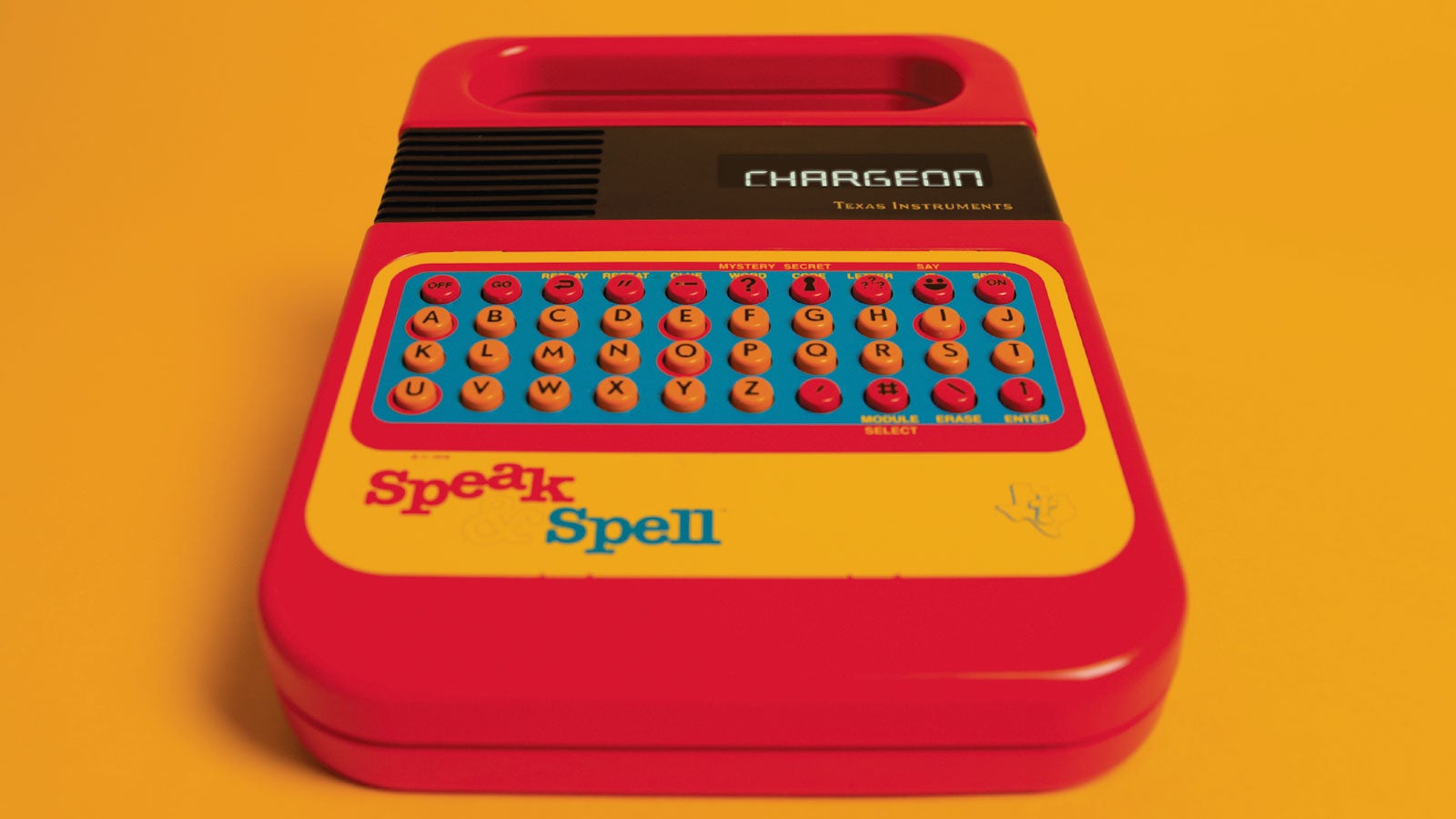
Speak & Spell Was a Game Changer
Spring 2017 | By Bree Adamson ’04
If you’re a parent or child of the ’80s, you’re likely familiar with the brightly colored Speak & Spell and the metallic, metronomic voice it produced. But when it debuted in 1978, few could have predicted that the hardware inside that plastic icon would forever change the landscape of technology and communication.
“We had created the first single-chip digital signal processing (DSP) device,” says Gene Frantz ’71, one of the four original designers of the Speak & Spell from Texas Instruments. The discovery of DSP allowed researchers to study signal processing in real time with no perceived delay between the input and output of a signal. In short, they could convert information from analog to digital — and back to analog — almost instantly.
Frantz and his team’s breakthrough in DSP led to the creation of synthesized speech and contributed to advancements in digital audio, digital cameras, wired and wireless phone technology, and cloud storage. He says, “Many of the products we can no longer live without can be traced back to [DSPs in] early products, and finally back to the Speak & Spell.”
Here are a few more facts about the Speak & Spell: